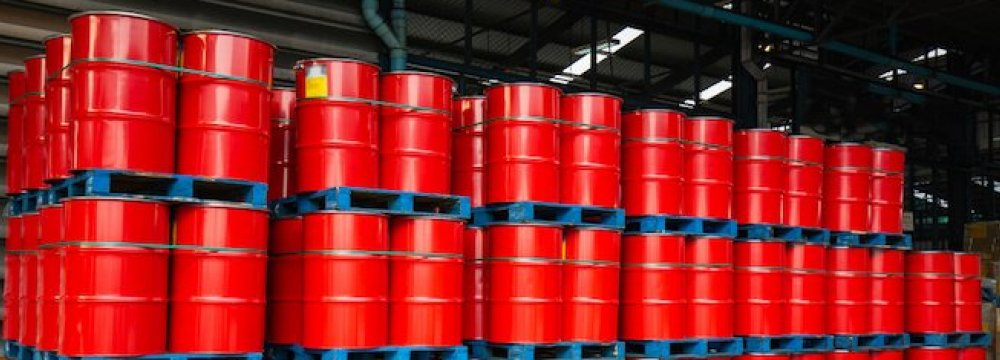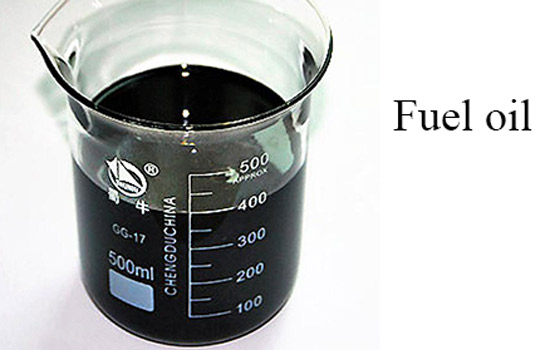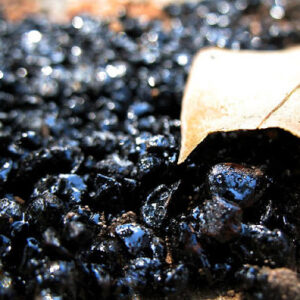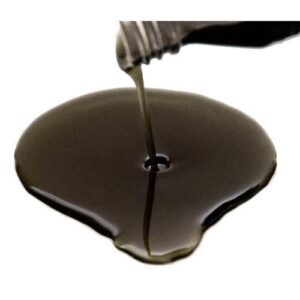Description
Fuel oil is a fraction obtained from petroleum distillation, either as a distillate or a residue. Broadly speaking fuel oil is any liquid petroleum product that is burned in a furnace or boiler for the generation of heat or used in an engine for the generation of power, except oils having a flash point of approximately 40 °C (104 °F) and oils burned in cotton or wool-wick burners.
The term fuel oil is also used in a stricter sense to refer only to the heaviest commercial fuel that can be obtained from crude oil i.e. heavier than gasoline and naphtha.
The ASTM classification system, originally based on early refining and combustion engineering practices and nomenclature, identifies 6 fuel oil specifications. Different definitions do however exist.
Increases in the fuel oil number signify an increased boiling point and carbon chain length and heavier viscosity. Price usually decreases as the fuel number increases.
- Number 1: a volatile distillate oil intended for vaporizing pot-type burners. It is the kerosene refinery cut that boils off right after the heavy naphtha cut used for gasoline. Older names include coal oil, stove oil and range oil.
- Number 2: a distillate home heating oil. Trucks and some cars use similar diesel fuel with a cetane number limit describing the ignition quality of the fuel. Both are typically obtained from the light gas oil cut.
- Number 3: a distillate oil for burners requiring low-viscosity fuel. ASTM merged this grade into the number 2 specification and the term is rarely used.s
- Number 4: a commercial heating oil for burner installations not equipped with preheaters. It may be obtained from the heavy gas oil cut.
- Number 5: a residual-type industrial heating oil requiring preheating to 170 – 220 °F (77 – 104 °C) for proper atomization at the burners. This fuel is sometimes known as Bunker B. It may be obtained from the heavy gas oil cut, or it may be a blend of residual oil with enough number 2 oil to adjust viscosity until it can be pumped without preheating. Also called Navy Special Fuel Oil, Navy Special or Furnace Fuel Oil.
- Number 6: a high-viscosity residual oil requiring preheating to 220 – 260 °F (104 – 127 °C). Residual means the material remaining after the more valuable cuts of crude oil have boiled off. The residue may contain various undesirable impurities including 2 percent water and one-half percent mineral soil. This fuel may be known as residual fuel oil (RFO), by the Navy specification of Bunker C, or by the Pacific Specification of PS-400. Also called Furnace Fuel Oil.
- Mazut: a residual fuel oil often derived from Russian petroleum sources and is either blended with lighter petroleum fractions or burned directly in specialized boilers and furnaces. It is also used as a petrochemical feedstock.
Standards and Classifications
The first standard for fuel oil came in 1982. The latest standard is ISO 8217 from 2005. The ISO standard describe four qualities of distillate fuels and 10 qualities of residual fuels. Over the years the standards have become stricter on environmentally important parameters such as sulfur content.
Some parameters for different grades of marine fuel oils according to ISO 8217 (3. ed 2005):
Bunker Fuels
Bunker fuels are also a type of fuel oil, used aboard ships. Bunker fuel is often used as a synonym for No. 6 fuel oil which is the most common bunker fuel.
- Bunker A : No. 2 fuel oil
- Bunker B : No. 4 or 5 fuel oil
- Bunker C : No. 6 fuel oil
Marine Fuels
Other types of classification used in the maritime field also include :
- HFO : Heavy Fuel Oil – pure or nearly pure residual oil, roughly equivalent to No. 6 fuel oil
- IFO : Intermediate Fuel Oil – a blend of gasoil and heavy fuel oil, with less gasoil than marine diesel oil.
- MDO : Marine Diesel Oil – a blend of heavy gasoil that may contain very small amounts of black refinery feed stocks, but has a low viscosity up to 12 cSt so it need not be heated for use in internal combustion engines
- MFO : Marine Fuel Oil – same as HFO
- MGO : Marine Gas Oil – roughly equivalent to No. 2 fuel oil, made from distillate only
Marine fuels are often quoted on the international bunker markets with their maximum viscosity (which is set by the ISO 8217 standard) due to the fact that marine engines are designed to use different viscosities of fuel. The unit of viscosity used is the Centistoke and the fuels most frequently quoted are listed below in order of cost, the least expensive first :
- IFO380 : Intermediate fuel oil with a maximum viscosity of 380 Centistokes (<3.5% sulphur)
- IFO180 : Intermediate fuel oil with a maximum viscosity of 180 Centistokes (<3.5% sulphur)
- LS380 : Low-sulphur (<1.0%) intermediate fuel oil with a maximum viscosity of 380 Centistokes
- LS180 : Low-sulphur (<1.0%) intermediate fuel oil with a maximum viscosity of 180 Centistokes
- MDO : Marine Diesel Oil
- MGO : Marine Gas Oil
- IFO380 : Low-sulphur (<0.1%) Marine Gas Oil – The fuel is to be used in EU community Ports and Anchorages.









